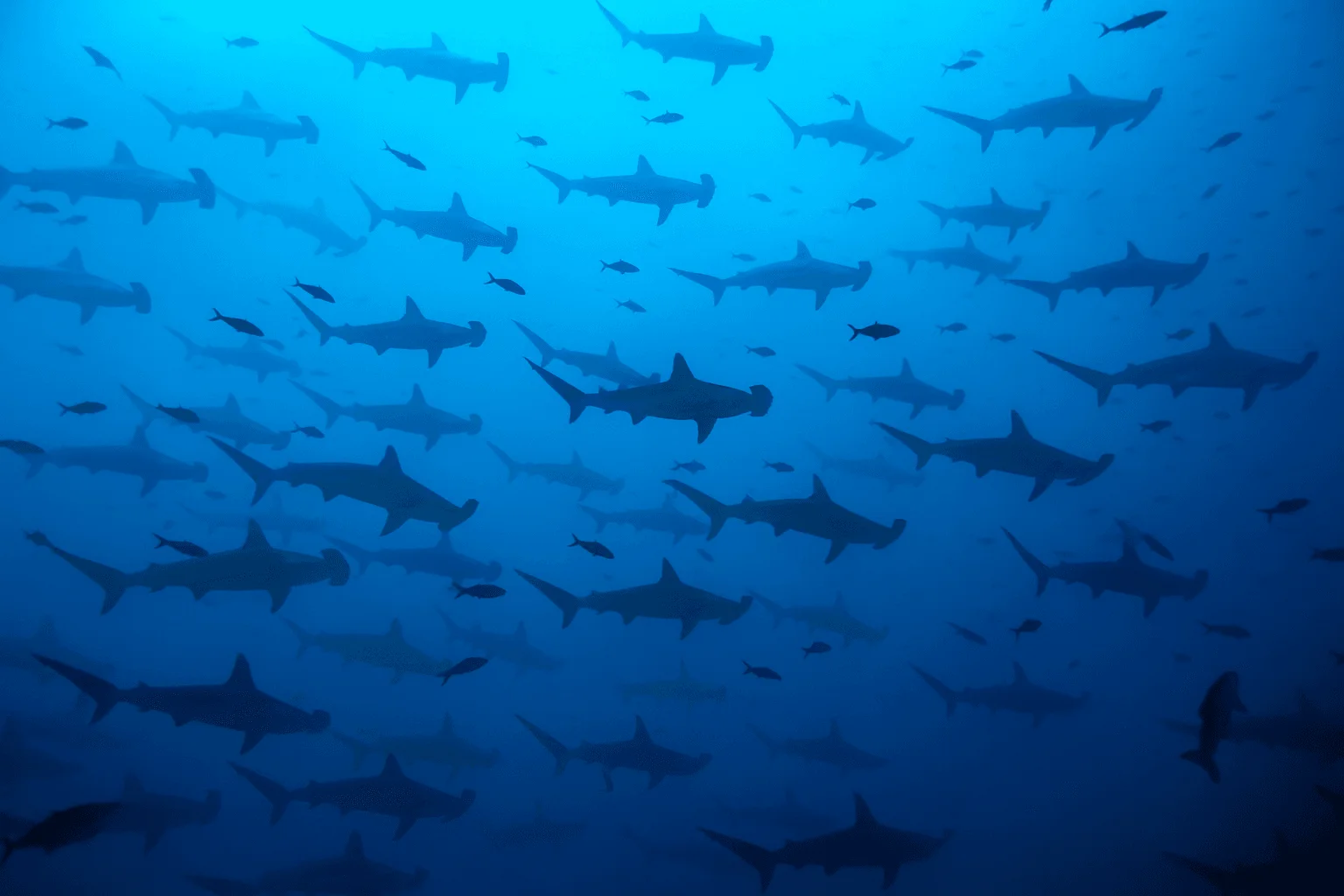Scuba Diving in Cocos Island
The Ultimate Guide
Cocos Island sits 550 km off Costa Rica’s Pacific coast and is only accessible by liveaboard. This uninhabited, jungle‑clad island was described by Jacques Cousteau as “the most beautiful island in the world.” Divers come here for the pelagic action: schooling scalloped hammerheads patrol the reef points and pinnacles, tiger sharks and Galápagos sharks cruise the blue, and manta rays and whale sharks glide past during the wet season. Visibility and sea conditions vary with the seasons, but the island’s underwater topography of walls, cleaning stations and steep pinnacles makes every dive an adventure. Currents can be strong and depths often exceed 30 m, so Cocos is considered an advanced destination. Trips are normally 9–10 days with a 36‑hour crossing each way from the mainland, and most operators include guided island hikes between dives.
Difficulty
Advanced
Temperature
24–30°C
Visibility
10–30 m

Diving Highlights
Best Months to Dive
Getting to Cocos Island for Diving
✈️Transportation
All Cocos trips depart by liveaboard from the port town of Puntarenas on Costa Rica’s mainland.
Fly into San José’s Juan Santamaría (SJO) or Liberia (LIR) international airports, then transfer by road (about 2 hours) to Puntarenas.
Liveaboards sail overnight, taking around 36 hours to reach the island. Because there are no day boats, trips typically last 9–10 days and include 7 days of diving.
Country
Costa Rica
Currency
Costa Rican Colón (CRC)
Electricity
120V, 60Hz,US plug
Cost of a Dive Trip in Cocos Island
Liveaboard
Best Dive Sites in Cocos Island
🐠Bajo Alcyone
This seamount rising from depths of 100 m is the most famous hammerhead cleaning station at Cocos. Divers descend to about 30 m and hook onto the rock, watching as hundreds of scalloped hammerheads cruise by to be cleaned by colourful king angelfish and butterflyfish. Tiger sharks and silky sharks patrol the blue, and the occasional whale shark glides past during the wet season.
🐢Dirty Rock
A series of volcanic pinnacles connected by narrow ridges, Dirty Rock hosts swirling schools of jack, snapper and barracuda. Hammerheads and Galápagos sharks sweep in from the blue, while eagle rays fly overhead. The shallower ridges are covered in soft corals and are home to white‑tip reef sharks and turtles.
🦈Manuelita
The dive sites around Manuelita Island include a shallow coral garden full of reef fish, white‑tip reef sharks and turtles, as well as a deeper wall where schooling hammerheads and Galápagos sharks cruise. Night dives here reveal hunting white‑tips and numerous slipper lobsters.
🐙Punta Maria
This submerged seamount features a cleaning station for tiger sharks and mantas. Divers hook in at 30 m and watch as the predators circle the peak, with large schools of bigeye trevally and snapper passing overhead. Currents can be fierce but the action is worth it.
What Divers Say About Diving in Cocos Island
Alex Thompson
Marine Biologis / DivemasterFew places on earth match the wild feeling of Cocos Island. 🌊 Imagine descending into blue water with nothing but open ocean around you, then watching dozens—sometimes hundreds—of scalloped hammerheads materialize from the gloom. Every dive feels like you’ve entered a BBC documentary: tiger sharks and silvertips cruise by, manta rays barrel‑roll overhead and dolphins dart in to investigate your bubbles. Between dives you hang out on the boat with like‑minded adventurers and share stories over a cup of Costa Rican coffee. It’s remote, raw and totally addictive.
Frequently Asked Questions About Diving in Cocos Island
When is the best time to dive Cocos Island?
The dry season (December–May) offers calmer seas and better visibility, while the wet season (June–November) brings more plankton and peak shark and manta encounters.
What marine life can I see at Cocos?
Expect massive schools of scalloped hammerhead sharks, plus tiger, silky and Galápagos sharks, manta and devil rays, whale sharks in mid‑year, dolphins, turtles and clouds of reef fish.
Is Cocos suitable for beginners?
No. Strong currents, surge and deep drift dives mean Cocos is recommended only for advanced divers with experience in blue‑water conditions.
How many dive sites are there around Cocos?
Around 20 sites have been charted, including pinnacles like Bajo Alcyone, Dirty Rock and the Manuelita sites. Most trips rotate between a handful of signature spots.
How long does it take to reach Cocos Island?
From Puntarenas it’s about 36 hours by boat, so trips usually run 9–10 days to allow a full week of diving.